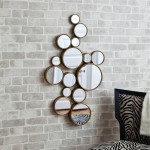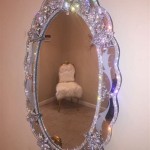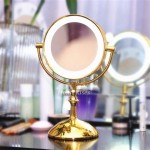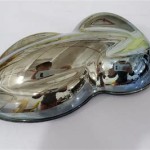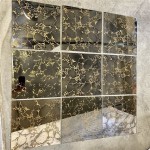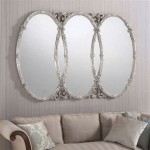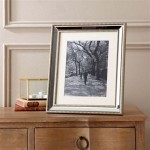Antique Mirror Tile
Antique mirror tile offers a unique blend of vintage charm and modern versatility, making it a popular choice for interior design projects. Its distinctive aged appearance adds character and depth to any space, whether used as a backsplash, wall covering, or decorative accent.
The process of creating antique mirror tile involves treating modern glass to replicate the look of aged mirrors. Various techniques are employed to achieve this effect, including chemical treatments, applying reflective backings with imperfections, and distressing the glass surface. The resulting tiles exhibit the subtle imperfections, cloudy patches, and variations in reflectivity that are characteristic of genuine antique mirrors.
Several factors contribute to the unique aesthetic of antique mirror tile. The type of glass used plays a significant role, with some manufacturers opting for thicker, more textured glass to enhance the antique effect. The backing material also influences the final appearance. Traditional silvering techniques, often using a combination of silver nitrate and other chemicals, can create a slightly warped or mottled reflection. Modern variations may involve applying a thin film of metal to the back of the glass, allowing for greater control over the aging process and resulting in different reflective qualities.
The color palette of antique mirror tile ranges from subtle smoky grays and muted silvers to warmer tones with hints of gold or amber. These variations arise from the specific antiquing techniques used and the composition of the backing material. For example, a copper or gold backing can impart a warmer, more aged look than a traditional silver backing.
The versatility of antique mirror tile allows for its incorporation into various design styles. In traditional settings, it can enhance the period charm of a Victorian-era bathroom or add a touch of elegance to a classic dining room. In contemporary spaces, it can serve as a striking contrast against clean lines and minimalist aesthetics, introducing texture and visual interest.
When considering incorporating antique mirror tile into a design project, several practical aspects should be considered. The size and shape of the tiles are important factors. Square and rectangular tiles are commonly available in varying dimensions, offering flexibility in layout and design. Larger tiles can create a seamless, expansive look, while smaller tiles can be used to create intricate patterns and mosaics.
Installation methods for antique mirror tile are similar to those used for standard ceramic or glass tiles. A suitable adhesive is crucial for ensuring proper adhesion and longevity. Given the delicate nature of antique mirror tile, careful handling during installation is essential to prevent damage. Protective gloves and eyewear are recommended.
Maintenance of antique mirror tile is relatively straightforward. Regular cleaning with a mild glass cleaner and a soft cloth is typically sufficient. Abrasive cleaners or harsh chemicals should be avoided, as they can damage the delicate antique finish. Special care should be taken to avoid excessive moisture, which can seep into the edges of the tiles and compromise the backing.
Antique mirror tile offers a variety of design possibilities. It can be used to create a dramatic feature wall in a living room or add a touch of glamour to a powder room. As a kitchen backsplash, it reflects light and adds depth to the space. It can also be used to create decorative accents, such as framed mirrors or inlay designs in furniture.
The reflective properties of antique mirror tile can be strategically employed to enhance the perception of space. In smaller rooms or areas with limited natural light, strategically placed antique mirror tiles can create the illusion of greater depth and brightness. By reflecting light and surrounding objects, they can visually expand the perceived boundaries of the room.
The cost of antique mirror tile can vary depending on several factors, including the manufacturing process, the type of glass used, and the complexity of the antiquing technique. Generally, it commands a higher price point than standard mirror tile due to the specialized processes involved in creating its unique aged appearance. However, the added character and visual appeal it brings to a space often justify the investment.
Sourcing antique mirror tile typically involves specialty tile retailers, interior design showrooms, or online suppliers. When selecting a supplier, it's important to consider factors such as the quality of the tiles, the range of available styles and finishes, and the supplier's reputation for customer service. Examining samples in person is highly recommended to ensure the tiles meet the desired aesthetic and quality standards.
The enduring appeal of antique mirror tile lies in its ability to seamlessly blend vintage charm with contemporary design. Its unique reflective qualities, varied color palette, and adaptable nature make it a versatile material suitable for a wide range of interior design applications.

Antique Mirror Tiles Vintage Müller Designs

Aged Foxed Antique Distressed Mirror Tile Oxford Composite

Antique Mirror Tiles 6 Pack

Antique Mirror Bevel Brown Glass Tile Original Style

15 Antique Mirror Tile Ideas Tiles

Antique Mirror Tiles Backsplash Müller Designs

Vilna Argenta Antique Mirror 3x6 Glass Tile Tilebar Com

Pack Of 16 Antique Mirror Glass Aged Distressed Foxed Tiles 40x40cm

Merola Tile Re Beveled Antique Mirror 3 In X 6 Glass Wall 10 4 Sq Ft Case Wsdlsbam The Home Depot

Vilna Argenta Beveled 3x6 Antique Mirror Tile Tilebar Com


